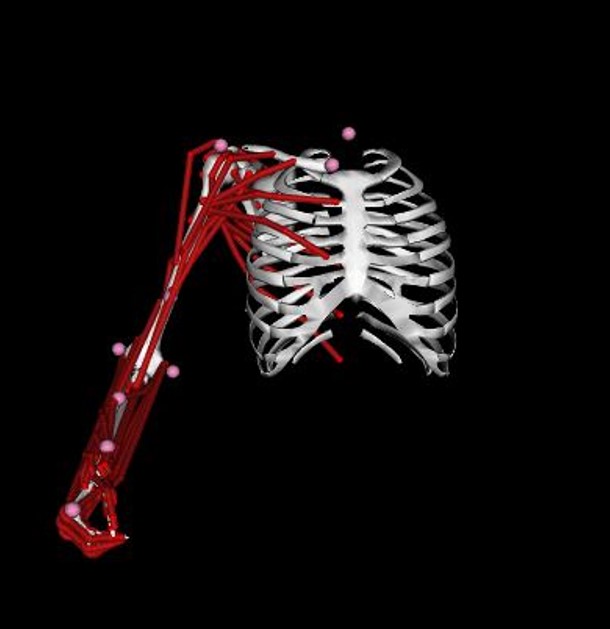
MOVHUM. Generating criteria for evaluation and design for devices by studying biomechanical models of the upper limb and spine
Progressing in knowledge about biomechanical characterisation and modelling of the upper limb and spine in order to guide functional aspects of future products in many sectors. Paying special attention to developing evaluation services in the socio-sanitary field.
Aims
The project is planned to last two years with the main aim of generating tools to attain design criteria for products based on research into biomechanical models of the upper limb and spine.

To do so, work will be done to identify needs in specific industrial sectors and guide the implementation of the knowledge generated. Specific products will be analysed in functional terms, and the interactions with the variables analysed in biomechanical models will be studied.
Simultaneously, knowledge will be gained about biomechanical characterisation of the upper limb and spine, and research will be done into analytical methods and tools that improve analyses of the biomechanical functions associated with interaction with different products and services.
Collaborating companies
Industries:
The potential companies benefiting from the project’s results are all of those whose products have or aspire to have great interaction with the functions of the upper limb or spine and in which knowledge of the biomechanical variables leads to clear benefits in designing and developing them.
In principle, clear implications have been identified in industries such as:
1. Orthopaedics.
2. Automotive components.
3. Furniture.
4. Companies manufacturing products to practise sport (sports equipment in general)
5. Companies providing evaluation services in the fields of rehabilitation, bodily damage evaluation and occupational healthcare: MCSS (insurance companies collaborating with social security).
Coordinator:
Instituto de Biomecánica (IBV)
Duration and reference no.
Start date: 01-01-2018
End date: 31-12-2018
Project reference no.: IMDEEA/2018/89
Its funding was requested in 2018 in the call for aid by the Valencia Business Competitiveness Institute (IVACE) aimed at technological centres in the Valencia Community region for the 2018 tax year, with the support of IVACE (Valencia regional government, Generalitat) and 50% co-funding by the European Union via the European Regional Development Fund (ERDF) as part of the ERDF’s Operational Programme for the Valencia Community region, with case no. IMDEEA/2018/89.



